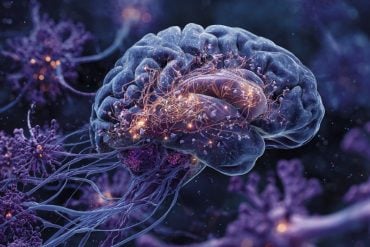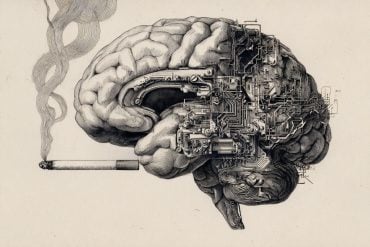Summary: Researchers conducted a novel study on language development in autistic children, revealing that it does not follow a linear path but progresses through three distinct stages.
This study is the largest of its kind, involving over 31,000 participants. It challenges traditional views by showing that language comprehension and speech ability are independent in autistic children, and suggests a new two-dimensional approach to assessing communication abilities.
This research could transform language therapy interventions and our understanding of language development in autism.
Key Facts:
- The study involved over 31,000 autistic individuals and confirmed that language comprehension in autism develops in three distinct stages rather than linearly.
- Findings suggest that traditional methods of assessing language comprehension by vocabulary size are inadequate and may lead to ineffective therapy focuses.
- The study emphasizes the importance of starting intensive language therapy early due to a shorter critical period for language acquisition in autistic children.
Source: Boston University
According to The National Institute on Deafness and Other Communication Disorders (NIDCD), Autism Spectrum Disorder, or ASD, can affect children’s language development and communication in a variety of ways.
While some children with ASD may encounter difficulties communicating verbally, others exhibit impressive vocabularies and the ability to speak on specific topic areas in detail.

A new study led by Boston University neuroscientist Dr. Andrey Vyshedskiy examines these unique pathways of language development in autistic children.
Published in npj Mental Health Research, this research, encompassing data from over 31,000 autistic individuals, stands as the most extensive of its kind on language comprehension acquisition in autism.
Dr. Vyshedskiy’s study supports an idea he had more than two decades ago: that language learning for autistic individuals doesn’t happen in a straight line but goes through three different stages.
In this Q&A, he discusses the key takeaways from the research, and its implications for clinicians, educators, and caregivers.
Can you summarize the main insights from this study?
The common intuitive belief is that language comprehension development follows a linear trajectory: children acquire one grammatical rule at a time.
Based on a neurological approach, I predicted over 20 years ago that instead of linear development, language unfolds in three steps corresponding to three language comprehension mechanisms of increasing complexity.
The new study of over 31,000 autistic individuals, published in the journal npj Mental Health Research, validates this prediction.
The implications of this discovery are important for philosophy, paleoanthropology, linguistics, clinical medicine, and for improving language therapy interventions for children with autism.
What was the traditional understanding of how children develop language, and how does this research challenge that view?
The current practice of characterizing children’s communication ability only in terms of their speech (i.e., verbal, nonverbal, or minimally verbal) is insufficient and one-sided.
The new results show that communication abilities can vary independent of verbal abilities. For example, nonverbal children with full syntactic language comprehension have normal ability to communicate albeit nonverbally, while verbal children lacking syntactic language comprehension do not have a normal ability to communicate by any means.
The new study demonstrates that the three identified language comprehension mechanisms are neurologically and clinically distinct from the speech ability.
A combined two-dimensional language characterization in terms of both language comprehension and verbal level will result in better identification of children’s communication ability and lead to more children reaching their full linguistic potential.
How many people were involved in this study? How did the research team collect and analyze information?
This is the largest study of language comprehension acquisition in autistic children. The study included over 31,000 individuals.
The study was conducted by surveying parents via a language therapy app popular among families with children diagnosed with autism and other language deficits.
Based on your research findings, how might clinicians and educators adapt their approaches to assessment and intervention to better address the diverse communication abilities of autistic children?
Language comprehension in children is commonly assessed based on vocabulary. This evaluation method can grossly misrepresent the child’s actual language comprehension progress. Moreover, it encourages therapists to focus on vocabulary training at the expense of exercises that build full language comprehension.
The new study provides evidence for creating new assessments evaluating the three mechanisms of language comprehension. These assessments are poised to improve language therapy interventions and enhance outcomes for individuals with language deficits.
What advice would you give to parents or caregivers based on the implications of this research for understanding and fostering language development in autistic children?
Focus all your efforts on improving your child’s language comprehension. Connecting words is more important than building vocabulary.
You can find language comprehension exercises in the book I wrote for parents: This Way to Language: Four Things to Do at the First Sign of Autism.
Moving forward, what areas of research or practice do you believe warrant further exploration to better understand and help autistic children with their language development?
Our recent research demonstrates that the critical period for language acquisition is significantly shorter in autistic children compared to typical children. The shortened critical period may be the main culprit preventing autistic children from acquiring full language.
These findings suggest that intensive language therapy has to start much earlier in children with suspected language deficits and encourages research into the possibility of pharmacological extension of the critical period for language acquisition.
About this language and Autism research news
Author: Katherine Gianni
Source: Boston University
Contact: Katherine Gianni – Boston University
Image: The image is credited to Neuroscience News
Original Research: Open access.
“Are there distinct levels of language comprehension in autistic individuals – cluster analysis” by Andrey Vyshedskiy et al. npj Mental Health Research
Abstract
Are there distinct levels of language comprehension in autistic individuals – cluster analysis
Autism is a neurodevelopmental condition characterized by deficits in social communication.
We assessed 14-language comprehension abilities in 31,845 autistic individuals 4 to 21 years of age using parent-generated reports.
Data-driven cluster analysis identified three distinct levels of language comprehension: (1) individuals in the command-language-phenotype were limited to comprehension of simple commands; (2) individuals in the modifier-language-phenotype showed additional comprehension of color, size, and number modifiers; 3) individuals in the most-advanced syntactic-language-phenotype added comprehension of spatial prepositions, verb tenses, flexible syntax, possessive pronouns, and complex narratives.
The observation of three distinct language levels was consistent across different age groups. Autistic individuals’ communication level is currently commonly characterized as nonverbal, minimally-verbal, or verbal. This one-dimensional description is not ideal for characterizing an individual’s communication ability.
In fact, a nonverbal individual with syntactic-language-phenotype may have normal ability to communicate albeit nonverbally, while a verbal person with command-language-phenotype does not have a normal ability to communicate by any means. Identification of the three distinct language-comprehension-phenotypes provides an opportunity to enhance characterization of individuals’ communication level.
A composite description in terms of both, verbal abilities and a language-comprehension-level, will not only be more precise, but can improve language therapy by focusing it on both aspects of language development.







